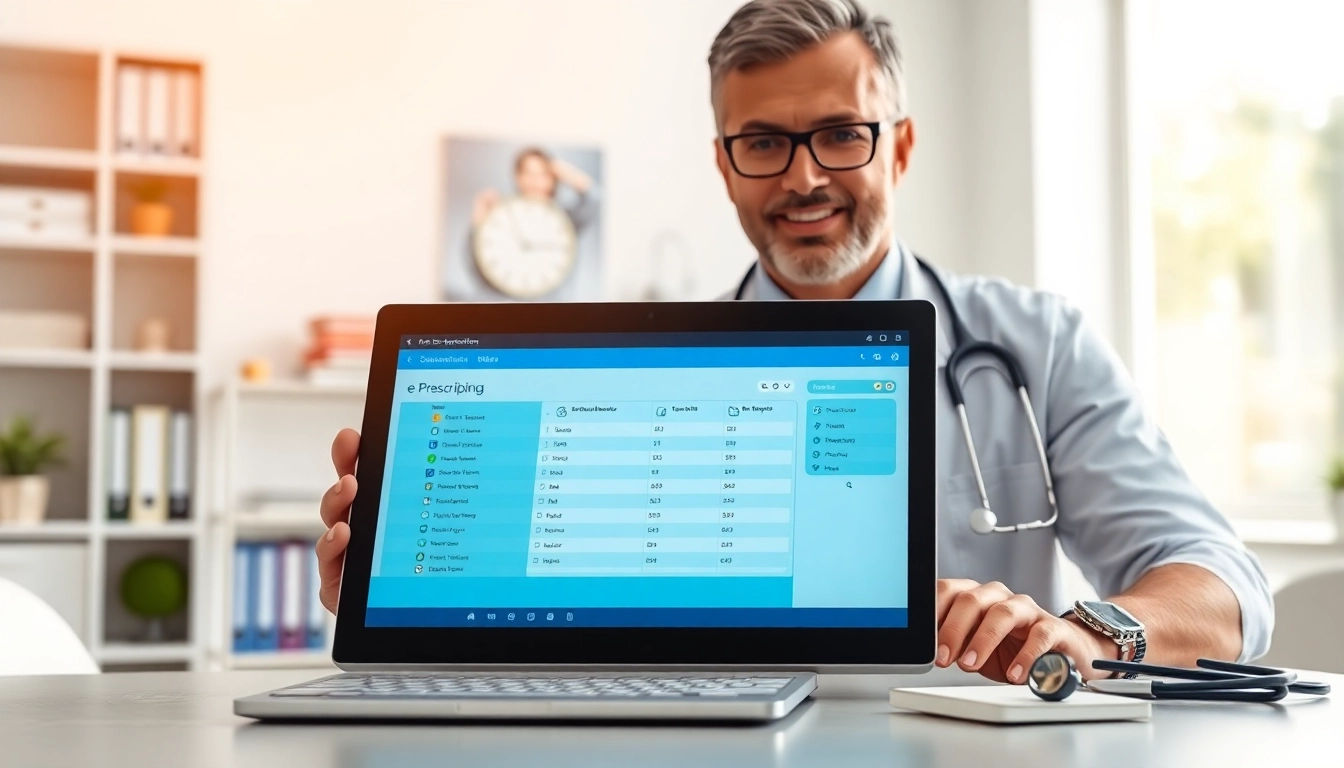The Benefits of Eprescribing Platforms
In an age where technology is rapidly reshaping the landscape of healthcare, eprescribing platforms have emerged as essential tools for healthcare providers. These platforms streamline the prescription process, enhance patient care, and facilitate communication between physicians and pharmacists. This article explores the myriad benefits of adopting e-prescribing technologies, delving into how they contribute to efficiency and accuracy in healthcare.
Increased Prescription Accuracy
One of the primary advantages of e-prescribing platforms is their ability to reduce prescription errors significantly. Traditional paper prescriptions can suffer from issues such as illegible handwriting, miscommunication, and manual entry errors. E-prescribing systems, however, provide standardized, electronic formats for prescriptions, which are much clearer and inevitably enhance accuracy.
Furthermore, these platforms typically integrate drug databases that automatically check for potential errors, such as drug interactions, allergies, and contraindications. This real-time checking helps to ensure that patients receive the correct medication and dosage, thereby increasing the overall safety of the prescribing process.
Enhanced Patient Safety
Patient safety is a top priority in healthcare, and e-prescribing platforms play a crucial role in enhancing it. By allowing prescribers to access patients’ medication history, these systems minimize the risk of adverse drug interactions. Additionally, alerts for allergies and side effects can be programmed into the e-prescribing system, further protecting patients from harmful prescriptions.
This proactive approach to patient safety not only leads to better clinical outcomes but also fosters trust between patients and their healthcare providers. When patients know that their safety is prioritized through advanced technology, they are likely more engaged and compliant with their medications.
Streamlined Workflows for Healthcare Providers
Eprescribing platforms lead to streamlined workflows, enabling healthcare providers to focus more on patient care rather than administrative tasks. With the ability to send prescriptions directly to pharmacies electronically, the time spent on phone calls, faxing, or physically delivering prescription slips is significantly reduced.
This efficiency allows healthcare professionals to spend more time with patients, addressing their concerns, and improving overall satisfaction. Moreover, the administrative burden lightens, paving the way for enhanced productivity within healthcare settings.
Key Features to Look for in Eprescribing Platforms
When considering an e-prescribing platform, healthcare organizations should carefully evaluate various features to ensure that the system meets their needs and complies with industry standards. Here are some critical features to consider:
User-Friendly Interface
A user-friendly interface is crucial for ensuring that healthcare providers can easily navigate the e-prescribing system. Complex interfaces can lead to frustration and mistakes, negating the benefits of the technology. An intuitive design, straightforward navigation, and clear instructions make it easier for healthcare professionals to adopt and utilize the system effectively.
Integration with EHR Systems
Seamless integration with Electronic Health Record (EHR) systems is another vital feature. An effective e-prescribing platform should easily synchronize with existing EHR systems to ensure a smooth flow of information. This integration allows healthcare providers to access comprehensive patient data, enhancing the decision-making process when prescribing medications.
Security and Compliance Standards
Security is paramount when dealing with sensitive patient information. Eprescribing platforms must employ robust encryption protocols and adhere to compliance standards, including HIPAA regulations, to safeguard patient data. Regular security updates and audits are also essential to maintain the integrity of the system and protect against potential breaches.
Challenges in Implementing Eprescribing Platforms
Despite the clear advantages of e-prescribing platforms, several challenges can arise during their implementation. Understanding these obstacles can help healthcare providers prepare effectively and facilitate a smoother transition.
Training the Staff Effectively
Training staff on new e-prescribing technologies often presents a significant hurdle. Employees may resist changing their workflows or may be intimidated by the new system. Comprehensive training programs that include hands-on practice, detailed user guides, and ongoing support can help mitigate these issues. Engaging key staff members as champions of the e-prescribing system can also foster a more positive attitude towards the transition.
Data Privacy Concerns
Data privacy remains a critical concern when implementing e-prescribing platforms. As these systems handle sensitive patient data, any security breaches can lead to severe consequences, including legal ramifications and loss of patient trust. Continuous education on data privacy measures and strict adherence to regulatory requirements are necessary to ensure that patient data is protected adequately.
Technical Barriers during Transition
The transition to an e-prescribing platform may also encounter technical barriers, such as system compatibility issues or inadequate infrastructure. Healthcare organizations should conduct thorough assessments of their existing systems before implementation, ensuring that adequate resources and technology infrastructure are in place to support the new platform. Collaborating with IT specialists can further alleviate issues related to system integration and functionality.
Regulatory Environment Surrounding Eprescribing Platforms
The regulatory landscape for e-prescribing platforms is continually evolving, impacting how these systems operate. Staying informed about current legislation and compliance requirements is crucial for healthcare providers implementing e-prescribing technologies.
Current Legislation and Compliance Requirements
Healthcare organizations must adhere to various regulations governing e-prescribing, including federal and state legislation. Common regulations require the implementation of security measures, authentication processes for prescribers, and documentation for prescribed medications. Staying updated on changes and ensuring compliance helps to avoid legal complications and promotes patient safety.
Impact of Government Initiatives
Government initiatives aimed at promoting e-prescribing can significantly impact the adoption of these platforms. Incentive programs for healthcare providers who adopt e-prescribing technologies encourage widespread implementation. Such initiatives help to advance the overall healthcare landscape, improving patient care and outcomes nationwide.
Future Trends in Healthcare Regulation
As technology continues to evolve, future trends in healthcare regulation will likely focus on enhancing patient data security, interoperability among systems, and streamlining the prescribing process. Expectations for greater accountability and transparency will shape the development of e-prescribing platforms, encouraging continuous improvement and innovation in this area.
Case Studies of Successful Eprescribing Platforms Implementation
Real-world case studies of successful e-prescribing implementation can provide invaluable insights into best practices and effective strategies. Exploring examples from various healthcare settings illustrates how e-prescribing platforms can enhance patient care and operational efficiency.
Examples from Various Healthcare Settings
Numerous healthcare facilities have successfully adopted e-prescribing platforms, showcasing the diverse applications of this technology. For instance, small practices have reported reduced prescription errors and improved medication management, while larger healthcare organizations have experienced operational efficiencies and enhanced patient engagement due to streamlined workflows.
Measuring Success and Outcomes
Measuring success requires tracking various performance metrics, such as error rates, prescription processing times, and patient satisfaction scores. These metrics provide clear insights into how well the e-prescribing platform is functioning and its impact on overall healthcare delivery. Analyzing this data can guide continuous improvements and optimize the use of the platform.
Lessons Learned and Best Practices
Lessons from successful e-prescribing implementations highlight the importance of thorough preparation, staff engagement, and ongoing support. Best practices include involving key stakeholders early in the decision-making process, providing comprehensive training, and forming dedicated teams to address challenges. Continuous evaluation of the platform’s performance also ensures it meets the evolving needs of both healthcare providers and patients.



